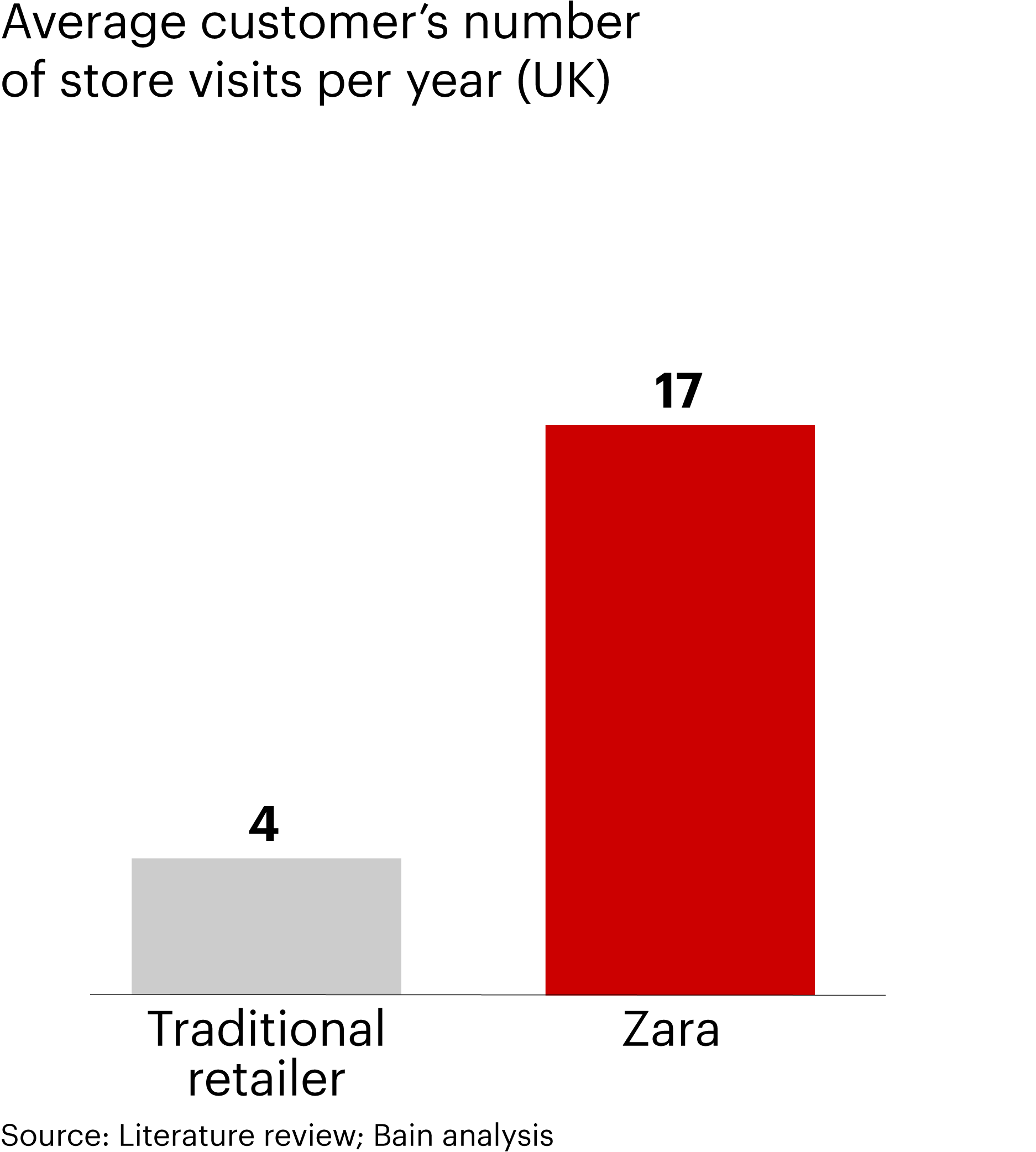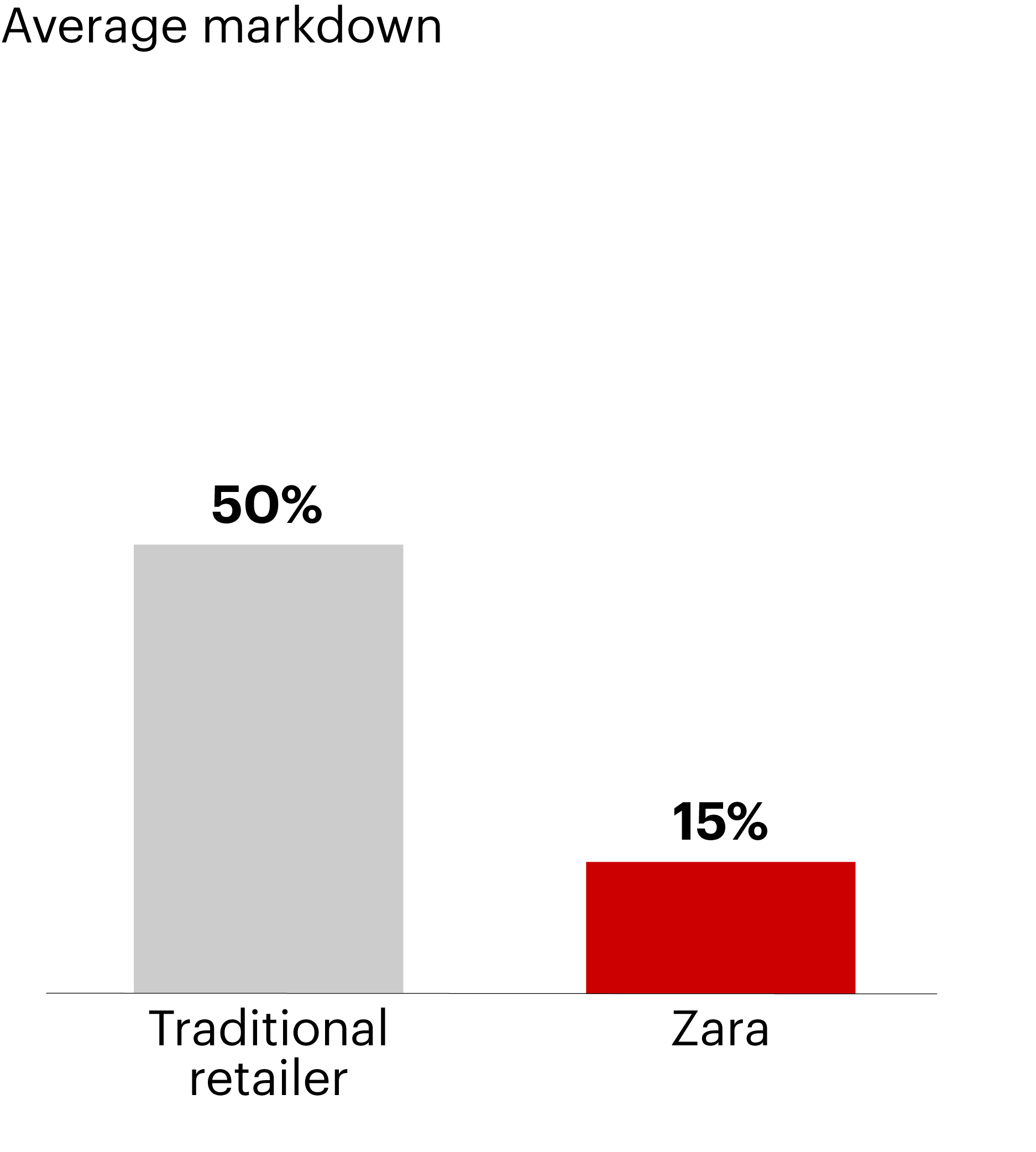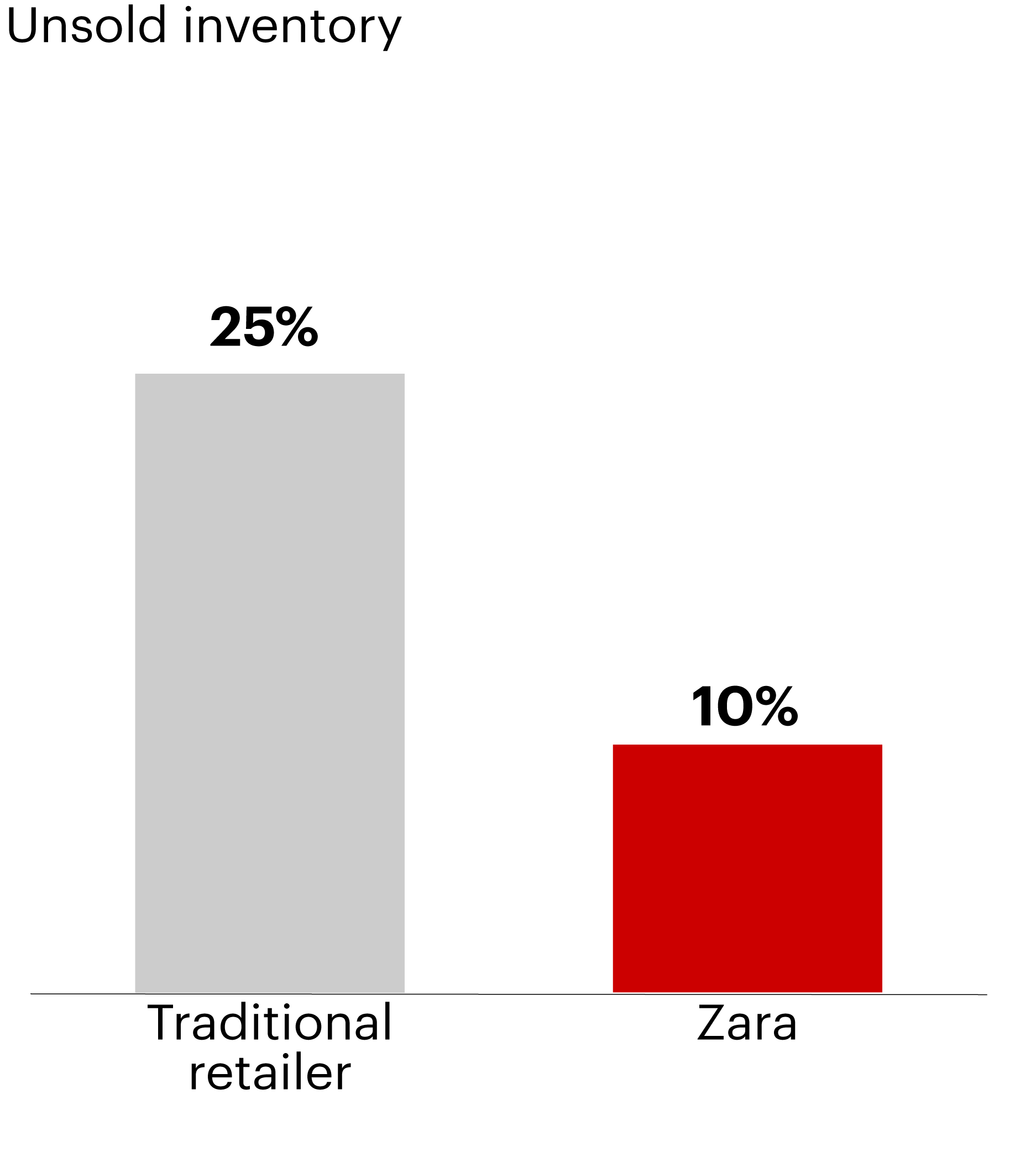Speeding ahead of the competition
The retailer's speed has conditioned customer behavior: shoppers expect frequently updated designs and know that popular items will be available only for a limited time. As a result, Zara customers visit their stores four times as often as traditional retailers (see below). This loyalty enables Zara to spend less than 0.5% of its sales on advertising, compared with 4% at H&M. It also reduces spending on unsold inventory and markdowns.




of store assortment replaced every two weeks
However, prioritizing speed at scale can be costly. With its nimble operations, Zara spends almost 50% of sales on manufacturing and logistics, while H&M spends around 40%. But because its products satisfy customer preferences and marketing costs are much lower, Zara achieves a higher margin and profit per unit while maintaining a faster inventory turnover (see below).
Despite higher manufacturing costs, Zara achieves a higher profit per unit and faster turnover than its competitors


